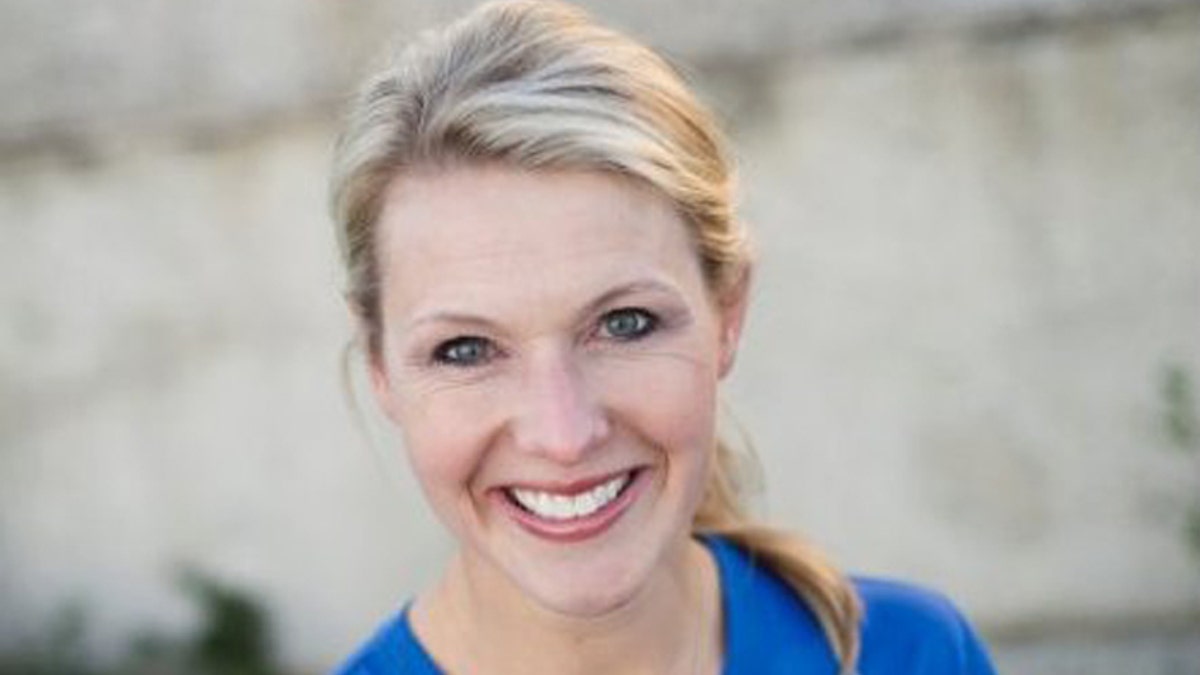
Lisa Hallett's simple act of healing has grown into a national nonprofit with thousands of runners.
For the Fallen. For the Fighting. For the Families. That’s the message of a fast-growing group of runners who honor the sacrifices of their loved ones in the military one step at a time.
The group, called "wear blue: run to remember," started simply in 2009, after Lisa Hallett found running to be a source of strength after her husband, Army Capt. John Hallet, was killed in Afghanistan. After beginning in the Seattle area, the group has become national, with its runners easily recognizable at road races throughout the country.
“With 'wear blue,' I know I’m not left behind," Hallett said. "I’m not alone. My family is supported on our journey forward, which I think is an incredible gift to thrive in the aftermath of this incredible tragedy.”
“I’m sometimes at a loss of words that 'wear blue' has been so powerful in my life and how it has made me feel.”
Members of the nonprofit, whose mission is honor, not fund-raising, meet weekly to honor the fallen and to train. At the start of each race in which they participate, the name of each military member killed on that weekend over the last 13 years of war is called out in a Circle of Remembrance, followed by members calling out the names of those for whom they personally run -- their husbands, wives, parents, siblings, friends or neighbors. The group now has active chapters and meet-ups at bases around the country, and its initial goal of logging a collective 6,764 miles -- one for each fallen military member in the War on Terror, was left in the dust long ago. So far, some 8,395 'wear blue' runners have run 39,336 miles.
Hallett lost her husband in the summer of 2009, just three weeks after the birth of their third child, Heidi, and just six weeks after his deployment with 5th Stryker Brigade to Shah Wali Kot District in Kandahar. Capt. John Hallett was killed when his unit encountered an improvised explosive device.
On the day her husband died, Lisa Hallett had attended her first support group meeting of spouses of men serving in her husband's unit. It was there that she received the grim news.
“It was the first time coming out of the house since I had Heidi,” she recalled. “I was feeling great. I remember putting the baby down, and confidently gathering my papers at the front of the room when I felt a tap on my shoulder. It was the commander.”
Lisa was told to leave her papers and followed the commander into another room.

Not forgotten: Army Capt. John Hallett, shown here with son Jackson, is remembered along with other fallen soldiers every time members of the group lace up their sneakers.
“I kept asking him to tell me John was okay, but his face was impassive,” Hallett recalled. “Two men were standing in green suits-- one with a white piece of paper. He began to read, "The Secretary of Defense regrets to inform you that your husband, Capt. John Hallett, is believed to have perished ..."
The Army officer was killed on his way back to base after delivering medicine to a village hit by a cholera outbreak.
“John was killed on a good will mission,” his wife noted.

John and Lisa Hallett's children,Heidi, Bryce and Jackson, seen here after a Memorial Day road race, will never forget their dad. (Courtesy: Ingrid Barrentine}
While deployed to Afghanistan in support of Operation Enduring Freedom, the 5-2 Stryker Brigade Combat Team sustained a significant amount of combat losses and casualties. As the spouses gathered repeatedly under somber circumstances, the bonds between them strengthened.
“Every week of that deployment, we were going to memorial services,” Hallett recalled. “We lost life and mind that year. Here on home soil, we were hungry to do something.”
Hallett and a small group of women began running together to get through the stresses and horrific changes brought by the deployment.
“In a world where we felt helpless, we were able to do something," she said. "We ran.”

For Lisa Hallett, shown here carrying baby Heidi as her husband's casket is loaded into a hearse, the project was a way to heal.
The group's first public outing came in Seattle’s Rock ‘n’ Roll Marathon, in June 2010. The course was lined with American flags, each representing "one of our guys,” Hallett said.
In the days and weeks following the Rock ‘n’ Roll Marathon, people from around the country reached out.
“We found people that needed a place to find the footing, if you will, to continue to move forward in the aftermath of that deployment. Through that, wear blue: run to remember was born.”
From that point on, Hallett and co-founder Erin O’Connor shared their vision for healing with spouses and families around the nation.
“I’m sometimes at a loss of words that 'wear blue' has been so powerful in my life and how it has made me feel,” Hallett said. “Every week, and every time I join people running in blue, not only do I have the space to remember, which enables me to move forward, but I know everyone else with that blue shirt on shares the same want to remember my husband.”
Training together and running to represent fallen soldiers in road races is Hallett's way of honoring fallen soldiers while building a network of support for the community.
“With 'wear blue,' I know I’m not left behind. I’m not alone. My family is supported on our journey forward, which I think is an incredible gift to thrive in the aftermath of this incredible tragedy,” Hallett said. “Wear blue does more for me than I do for it.”
